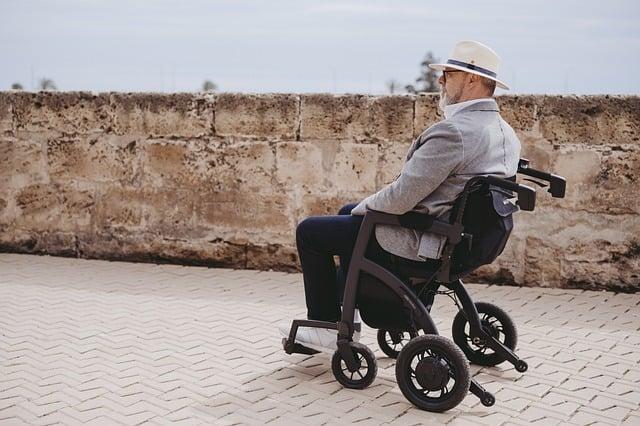In a cozy little town, a wise old owl named Oliver watched over the children as they played. One sunny afternoon, he noticed young Mia struggling to tie her shoelaces. Instead of swooping down to help, Oliver perched nearby and called out, “When do you think you’ll learn to do it yourself?”
Mia paused, pondering. “Maybe now?” she replied, determination sparking in her eyes. With a few tries, she succeeded, her face lighting up with pride. Oliver smiled, realizing that the best time to teach self-help skills is when curiosity meets the courage to try.
Table of Contents
- Identifying Developmental Milestones for Self-Help Skills
- Creating a Supportive Learning Environment for Independence
- Tailoring Self-Help Skills to Individual Needs and Abilities
- Integrating Self-Help Skills into Daily Routines and Activities
- Q&A

Identifying Developmental Milestones for Self-Help Skills
Understanding when to introduce self-help skills to children involves recognizing key developmental milestones that indicate readiness. Typically, children begin to show interest in independence around the age of 2, when they may start to mimic adult behaviors. At this stage, parents can encourage basic self-help skills such as:
- Feeding themselves with finger foods
- Putting on shoes (even if they are on the wrong feet)
- Washing hands with assistance
As children progress to ages 3 to 4, they often develop greater coordination and understanding of routines, making it an ideal time to introduce more complex tasks. During this period, caregivers can focus on skills like:
- Brushing teeth with supervision
- Getting dressed independently
- Using the toilet consistently

Creating a Supportive Learning Environment for Independence
Fostering independence in children begins with creating an environment that encourages exploration and self-sufficiency. This can be achieved by incorporating **accessible resources** and **age-appropriate tools** that empower children to engage in self-help activities. For instance, placing items within reach, such as utensils, clothing, and personal care products, allows children to practice these skills independently. Additionally, establishing a routine can provide a sense of security and predictability, making it easier for children to understand when and how to perform specific tasks.
Moreover, it’s essential to cultivate a mindset that values effort over perfection. Encouraging children to try new things, even if they struggle initially, helps build resilience and confidence. Parents and educators can support this by offering **positive reinforcement** and **constructive feedback**. Activities such as cooking simple meals, dressing themselves, or organizing their belongings can be introduced gradually, allowing children to master each skill at their own pace. By celebrating small victories and providing gentle guidance, we can nurture a supportive atmosphere that promotes lifelong independence.

Tailoring Self-Help Skills to Individual Needs and Abilities
When considering the timing and approach to teaching self-help skills, it is essential to recognize that each individual possesses unique needs and abilities. Tailoring these skills to fit personal circumstances can significantly enhance the learning experience. For instance, some individuals may thrive with a structured routine, while others might benefit from a more flexible approach. Understanding the learner’s preferences can lead to more effective skill acquisition. Key factors to consider include:
- Age and developmental stage: Younger children may require more hands-on guidance, while older individuals might be ready for independent practice.
- Cognitive abilities: Assessing the learner’s understanding and processing capabilities can help in selecting appropriate methods and materials.
- Physical abilities: Adapting tasks to accommodate physical limitations ensures that everyone can participate and succeed.
- Emotional readiness: Recognizing when an individual is motivated and open to learning can make a significant difference in their progress.
Moreover, incorporating feedback and ongoing assessment into the teaching process allows for continuous adjustment of strategies. This dynamic approach not only fosters a sense of ownership over the learning journey but also encourages resilience and adaptability. By focusing on the individual’s strengths and interests, educators and caregivers can create a supportive environment that promotes confidence and independence. Consider these strategies:
- Personalized goals: Setting achievable, individualized objectives can motivate learners and provide a clear path to success.
- Engaging activities: Utilizing interests to design fun and relevant tasks can enhance engagement and retention of skills.
- Regular check-ins: Frequent discussions about progress and challenges can help adjust the approach as needed.
- Celebrating successes: Acknowledging milestones, no matter how small, reinforces positive behavior and encourages further learning.

Integrating Self-Help Skills into Daily Routines and Activities
Integrating self-help skills into daily routines can significantly enhance a child’s independence and confidence. By embedding these skills into everyday activities, children can learn through practical experience rather than isolated instruction. For instance, during meal preparation, parents can encourage children to assist with simple tasks such as washing vegetables or setting the table. This not only teaches them essential cooking skills but also fosters a sense of responsibility and accomplishment. Other opportunities include:
- Morning Routines: Allowing children to choose their outfits or brush their teeth independently.
- Chores: Assigning age-appropriate tasks like making their bed or sorting laundry.
- Shopping Trips: Involving them in creating grocery lists and selecting items at the store.
Moreover, incorporating self-help skills into playtime can make learning enjoyable and engaging. Activities such as role-playing can simulate real-life scenarios where children practice decision-making and problem-solving. For example, setting up a pretend store can help them understand money management and social interactions. Additionally, parents can use storytelling to illustrate the importance of self-help skills, making the lessons relatable and memorable. By consistently weaving these skills into various aspects of daily life, children will not only learn but also internalize the value of independence.
Q&A
-
At what age should self-help skills be introduced?
Self-help skills can be introduced as early as toddlerhood, around ages 2 to 3. Children can start with simple tasks like dressing themselves or brushing their teeth. Gradually, more complex skills can be added as they grow older.
-
How do I know if my child is ready to learn self-help skills?
Look for signs of interest and ability. If your child shows curiosity about daily tasks or attempts to mimic adults, it’s a good indication they are ready to learn. Additionally, consider their motor skills and cognitive development.
-
What self-help skills should be prioritized?
Focus on essential skills such as:
- Personal hygiene (washing hands, brushing teeth)
- Dressing and undressing
- Feeding themselves
- Basic household chores (putting away toys, helping with laundry)
-
How can I effectively teach self-help skills?
Use a step-by-step approach. Demonstrate the task, then guide your child through it. Encourage independence by allowing them to try on their own, and provide positive reinforcement to build their confidence.
In the journey of growth, timing is key. By introducing self-help skills at the right moments, we empower individuals to navigate life’s challenges with confidence. Let’s embrace the art of teaching these essential skills, fostering resilience for a brighter future.

大家好,我是彼得潘,專業的手法身體治療師。我喜歡探索和研究各種主題,並透過與人工智慧的合作分享專業、實用、有趣的文章。我們定期進行人工審核,以確保內容的準確性。如果您發現文章中有任何不準確的地方,請隨時與我們聯繫,我們會及時糾正。您可以透過 [email protected] 與我們聯繫。



